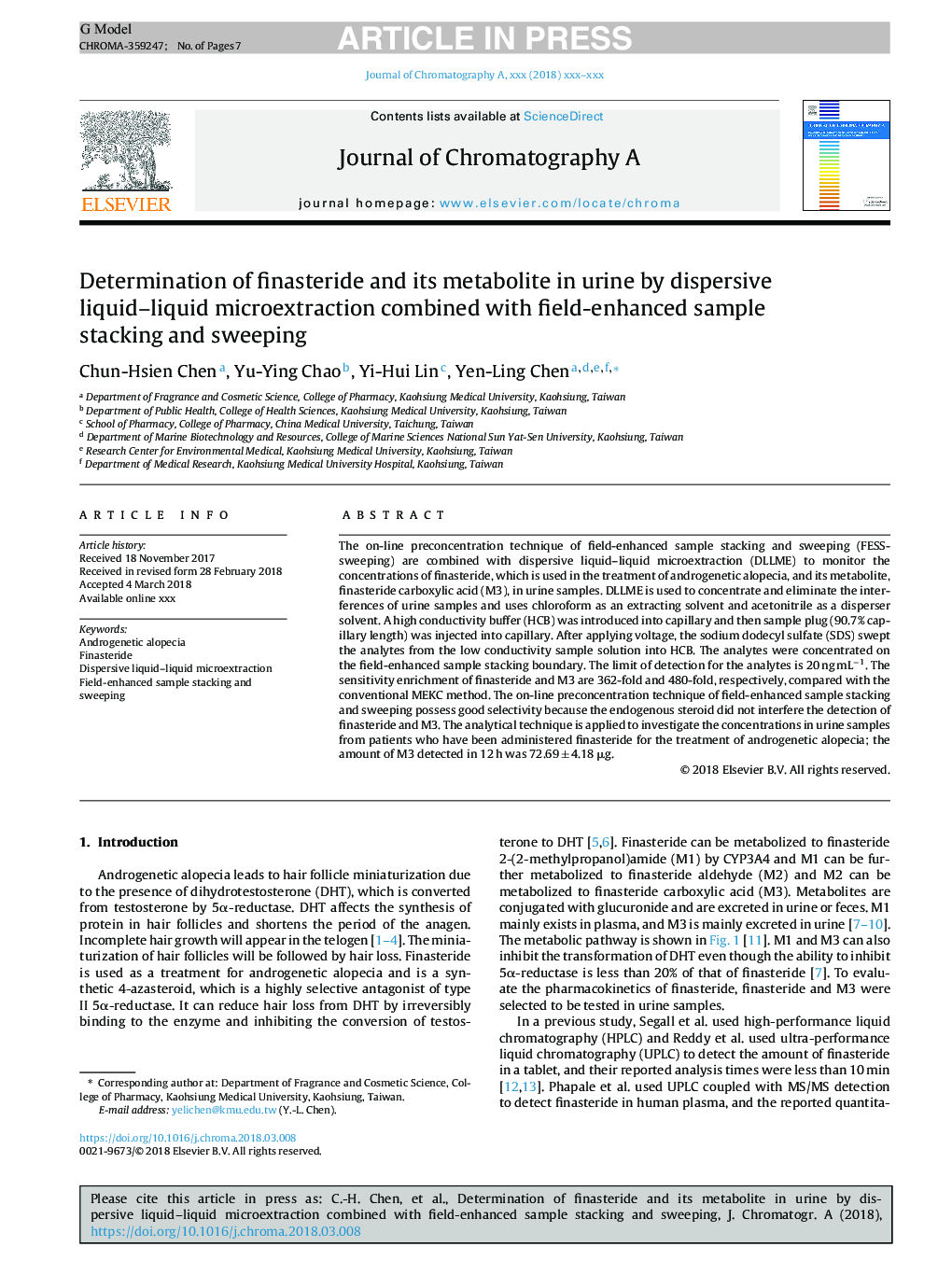| Article ID | Journal | Published Year | Pages | File Type |
|---|---|---|---|---|
| 7608350 | Journal of Chromatography A | 2018 | 7 Pages |
Abstract
The on-line preconcentration technique of field-enhanced sample stacking and sweeping (FESS-sweeping) are combined with dispersive liquid-liquid microextraction (DLLME) to monitor the concentrations of finasteride, which is used in the treatment of androgenetic alopecia, and its metabolite, finasteride carboxylic acid (M3), in urine samples. DLLME is used to concentrate and eliminate the interferences of urine samples and uses chloroform as an extracting solvent and acetonitrile as a disperser solvent. A high conductivity buffer (HCB) was introduced into capillary and then sample plug (90.7% capillary length) was injected into capillary. After applying voltage, the sodium dodecyl sulfate (SDS) swept the analytes from the low conductivity sample solution into HCB. The analytes were concentrated on the field-enhanced sample stacking boundary. The limit of detection for the analytes is 20â¯ngâ¯mLâ1. The sensitivity enrichment of finasteride and M3 are 362-fold and 480-fold, respectively, compared with the conventional MEKC method. The on-line preconcentration technique of field-enhanced sample stacking and sweeping possess good selectivity because the endogenous steroid did not interfere the detection of finasteride and M3. The analytical technique is applied to investigate the concentrations in urine samples from patients who have been administered finasteride for the treatment of androgenetic alopecia; the amount of M3 detected in 12â¯h was 72.69â¯Â±â¯4.18â¯Î¼g.
Related Topics
Physical Sciences and Engineering
Chemistry
Analytical Chemistry
Authors
Chun-Hsien Chen, Yu-Ying Chao, Yi-Hui Lin, Yen-Ling Chen,
